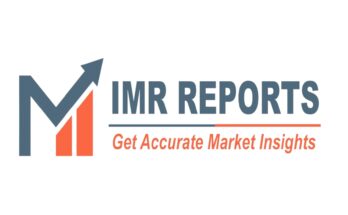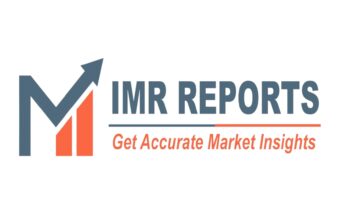[182 Pages Report] The aromatherapy market is estimated to be valued at ~US$ 4.6 Bn in 2019, unveils the new research study by Future Market Insights (FMI). According to the report, the aromatherapy market is projected to grow by ~7% YOY in 2020, primarily influenced by greater emphasis on good health and wellness.
Increasing inclination towards more effective relaxation treatment is giving a boost to the growth of the aromatherapy market. A notable rise in health consciousness and preference for herbal products among consumers, which tend to make intensive use of high-quality and effective products, is further likely to lead to surge in demand for aromatherapy.
To remain ahead of your competitors, request for a sample – https://www.futuremarketinsights.com/reports/sample/rep-gb-1080
Expansion of Product Lines by Essential Oil Manufacturers
In order to cater to growing demand for essential oils possessing therapeutic properties, various essential oil and diffuser manufacturers are focusing on expanding their product line in the aromatherapy market. For attracting new customers, companies are not only focusing on expanding their distribution network to hypermarkets and supermarkets, but also to premium drugstores and department stores.
Major companies in the aromatherapy market are adopting multi-level or referral marketing strategy to gain distinct competitive edge. Introduction of membership plans are gaining momentum among the aromatherapy market players, where specific members are given significant discount on aromatherapy products. These members are also known as independent salespeople (independent business owners (IBO)) or consultants. Consultants refer essential oils to others and earn some sort of incentives and discounts on their purchase.
Sales via rapidly penetrating e-commerce channels remain a prominent strategy adopted by key players in the recent years. Companies such as Young Living and doTerra, are actively engaging their customers to sign up as distributors to increase the sales of their new products through multi-level marketing plan. In the multi-level marketing strategy, companies are providing membership incentives, rewards, compensation plans, opportunity products, etc. These initiatives taken by the company is thus likely to influence the overall growth of the aromatherapy market.
Added Benefits of Essential Oils for Various Ailments Aiding the Market Growth
Aromatherapy acts as a complementary treatment in many viral and bacterial diseases such as acute respiratory infections, viral infections, influenza, and bronchitis. Aromatherapy can be used during prophylactic and therapeutic treatment regimens for many diseases such as Initial forms of atherosclerosis, coronary heart disease, neuro-dystonia, hypertension, hypotension, anxiety, depression, insomnia and many such disorders. Thus, added benefits and applications of essential oils in many indications will continue to account for greater gains in the aromatherapy market.
Aromatherapy – A Preferred Therapy to Improve Quality of Life
Studies have been conducted to prove the effectiveness of essential oils that support the body to heal. Essential oils such as thyme, rosemary, oregano, chamomile, and frankincense are used for the treatment of certain benign tumors to selectively harm or disable cancer cells while leaving healthy cells intact. Increasing inclination towards natural remedies provides good growth opportunities for players in the essential oil industry in the near future. Also, presently aromatherapy has been used for cancer patients as it reduces anxiety levels and relieves emotional stress, pain, muscular tension, and fatigue after chemotherapy or post radiation therapy.
Risk Factors Associated with Aromatherapy Restricting Market Growth
Some risk factors and complications are associated with aromatherapy as individuals have unique metabolism, vitality, and physical makeup. Therefore, acceptable dose for one may not be appropriate for others. Risk factors such as toxicity, skin sensitization, photosensitivity etc. have been reported with patients undergoing aromatherapy. However, many essential oils are contraindicated for use during pregnancy and breast-feeding due to their abortifacient properties. Thus, increasing apprehensions regarding the risks of essential oils and other complications result in low preference and reluctance for undergoing aromatherapy by patients, which in turn restrains revenue growth of the aromatherapy market to a certain extent.
Get a Tailored Made Report to Match Your requirements, Ask from Market Research Expert – https://www.futuremarketinsights.com/ask-question/rep-gb-1080
Categorization Of Aromatherapy Industry Survey
Aromatherapy Market by Product:
- Aromatherapy Consumables
- Essential Oils
- Floral
- Citrus
- Herbaceous
- Spicy
- Woodsy
- Earthy
- Camphorous
- Others
- Blended Oils
- Carrier Oils
- Essential Oils
- Aromatherapy Equipment
- Nebulizing Diffusers
- Ultrasonic Diffusers
- Evaporative Diffusers
- Heat Diffusers
Aromatherapy Market by Application:
- Relaxation
- Insomnia
- Pain Management
- Scar Management
- Skin & Hair Care
- Cold & Cough
- Others
Aromatherapy Market by Mode of Delivery:
- Topical Application
- Direct Inhalation
- Aerial Diffusion
Aromatherapy Market by Distribution Channel:
- Aromatherapy Products Sold at Retail Shops
- Aromatherapy Products Sold through Online Channels
- Direct Distribution of Aromatherapy Products
Aromatherapy Market by Region:
- North America Aromatherapy Market
- Latin America Aromatherapy Market
- Europe Aromatherapy Market
- East Asia Aromatherapy Market
- South Asia & Pacific Aromatherapy Market
- Middle East & Africa (MEA) Aromatherapy Market
For in-depth insights, Download a PDF Brochure – https://www.futuremarketinsights.com/reports/brochure/rep-gb-1080


